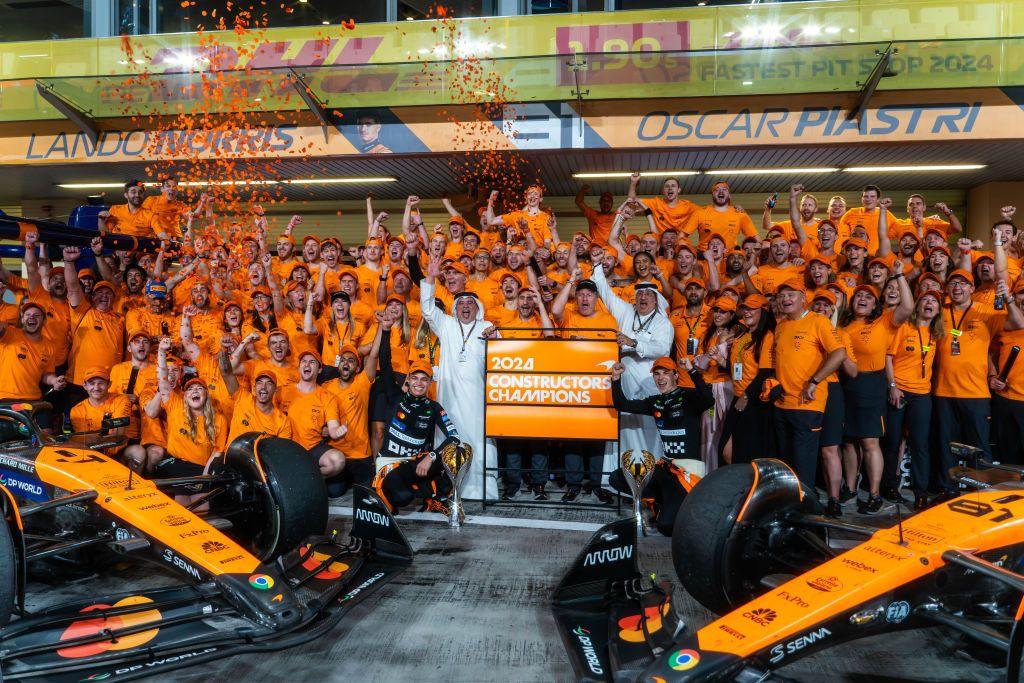
There are two world titles up for grabs in Formula 1 – for drivers and constructors.
The drivers’ championship is undoubtedly the more high-profile prize, but it’s the one for constructors that has a bigger impact on a team’s development and results.
That race is determined by the total points accumulated by the team’s drivers over a season, with their points added together and a league table formed.
This year is the first since 2021 that both titles haven’t gone to the same team. While Max Verstappen won his fourth consecutive individual crown, his Red Bull team finished third in the constructors’ standings as Sergio Perez had a poor season to finish eighth in the drivers’ title race.
That opened the way for McLaren to win the championship for the first time since 1998. Lando Norris’ victory in the season finale in Abu Dhabi meant the British team finished ahead of Ferrari by just 14 points.
What do F1 teams get for winning?
Prize money
This is allocated according to each team’s finishing position, with the highest-scoring teams generally awarded the most money.
This usually manifests as extra resources for car development during the following season, as well as bonuses for staff, though with teams working under a cost cap, the wealthiest teams may not actually gain a huge advantage.
Every pound counts for the teams towards the bottom of the table, though, so the battle for points is always important.
The prize pool is made up of about 50% of F1’s commercial profits, meaning it can vary from season to season.
The exact amount of money up for grabs this season isn’t known, but is estimated to be about $1bn – that’s almost £783m. The winning constructors will take home about $140n (almost £110m).
The pool isn’t evenly distributed based on the standings, though, with Ferrari always given an extra payment because of their status as F1’s oldest team having competed in every season since 1950.
Pit-lane advantage
The constructors’ championship winners are allowed to choose where they set up their pit lane in the following season.
Mostly, they will choose the garage closest to the pit-lane entry. That allows drivers to have a clear sight of their pit crew and, therefore, the ability to dock without having to dodge around other teams. This is especially useful at tracks with short pit lanes.
When there are an odd number of teams on the grid, one pit box might be slightly larger than the others. This will become relevant in 2026, when an 11th team will join the grid.
Wind-tunnel time
Another result of securing the constructors’ title can actually be considered a slight disadvantage. The higher up the standings a team finishes, the less wind-tunnel time they are allowed.
A wind tunnel is a large but narrow tube-shaped room that stimulates their airflow around an F1 car. Engineers use the information gathered in the wind tunnel to determine how to optimise airflow and, therefore, how to make the car as fast as possible.
For teams at the top of the standings, wind-tunnel time is restricted in a bid to even the playing field the following season.
